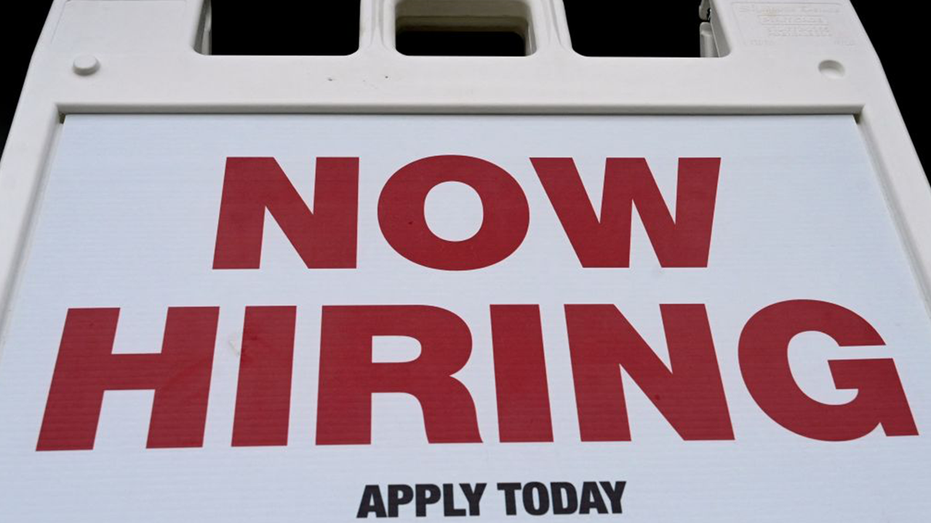Small businesses still dealing with inflation, labor shortages
33% of small business owners cited inflation as their most important problem
Small businesses continue to feel the impacts of inflation and have struggled to find adequate workers to fill job openings.
According to the National Federation of Independent Business, 33% of small business owners cited inflation as their most important problem in October. That number is three points higher than was reported in September.
The NFIB's Small Business Optimism Index dropped 0.8% to 91.3 in October, marking 10 consecutive months it has remained under the 49-year average of 98.
"Owners continue to show a dismal view about future sales growth and business conditions, but are still looking to hire new workers," NFIB Chief Economist Bill Dunkelberg said in a statement.
POWERBALL DRAWING FOR $1.9 BILLION JACKPOT DELAYED DUE TO TECHNICAL GLITCH

Small businesses are continuing to feel the impacts of inflation and have struggled to find adequate workers to fill job openings. (Getty Images)
"Inflation, supply chain disruptions and labor shortages continue to limit the ability of many small businesses to meet the demand for their products and services," he continued.
Small business owners expecting better business conditions over the next six months dipped two points from September to a net negative 46%, NFIB data shows. The data also revealed that the net percent of owners raising average selling prices declined one point to a net 50%, which was seasonally adjusted, and that half of all the businesses surveyed are raising prices as a result of inflation.
The NFIB's October jobs report found that 46% of owners reported job openings that were hard to fill, the same as was reported in September. Among owners seeking workers, 90% reported few or no qualified applicants for the positions they were looking to fill.
Seasonally adjusted, a net negative 8% of all owners reported higher nominal sales in the past three months, a decline of three points from September. The net percentage of owners expecting higher real sales volumes dropped three points to a net negative 13%.
INFLATION TOP ELECTION ISSUE FOR SMALL BUSINESSES LEADING INTO MIDTERMS

The NFIB's October jobs report found that 46% of owners reported job openings that were hard to fill, the same as was reported in September. Among owners seeking workers, 90% reported few or no qualified applicants for the positions they were looking (AP Images)
The net percent of owners experiencing increases in inventory jumped one point to a net negative 1%. A total of 16% of owners reported reductions in inventory as they cautiously cut down on inventory purchases.
Owners were also impacted by the supply chain, with 31% of owners saying recently that supply chain disruptions have had a significant impact on their business. Another 31% report a moderate impact and 27% said their business experienced a mild impact. Only 10% of owners said they felt no impact from recent supply chain disruptions.
The net percentage of owners increasing average selling prices dipped one point from September to a seasonally adjusted net 50%. When adjustments are not considered, 8% of owners said their average selling prices were lower and 56% reported higher average selling prices. Price increases were the most common in retail, wholesale, construction and services.
A net 44% of owners reported raising compensation, when seasonally adjusted, which is down one point from September. A net 32% plan to increase compensation in the next three months, a nine-point jump from September and the highest since October 2021.

A net 44% of owners reported raising compensation, when seasonally adjusted, which is down one point from September. A net 32% plan to increase compensation in the next three months, a nine-point jump from September and the highest since October 2021 (iStock / iStock)
CLICK HERE TO READ MORE ON FOX BUSINESS
When asked about their top business problem, 10% percent of owners said labor costs and 23% cited labor quality.
The frequency that positive profit trends were reported was a net negative 30%, a one-point increase from September. Among owners reporting lower profits, 34% attributed this to the rise in material costs, 22% blamed weaker sales, 12% said labor costs, 12% said lower prices, 7% cited the usual seasonal change and 2% cited higher taxes or regulatory costs. Of the owners reporting higher profits, 47% gave credit to sales volumes, 20% cited usual seasonal change and 16% said higher prices.





















